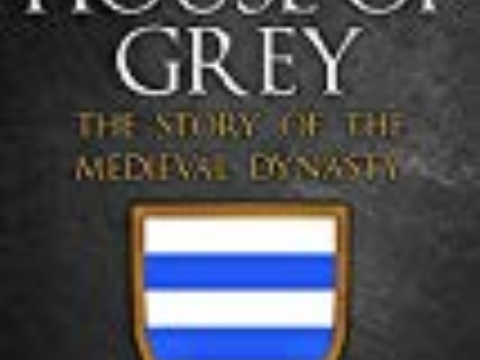Music in the Royal Courts
Chapter 3 : Royal Interest
Another young musician who began his career in Wolsey’s chapel was Mark Smeaton. Smeaton played the lute, the virginals and the regals and was an accomplished singer and dancer. Henry was so pleased with him that he was given a position as a musician in the Privy Chamber. He was thus often in the company of Anne Boleyn. This proximity of the Queen to a low-born man (Smeaton was the son of a carpenter) was used to blacken the Queen’s name, and Smeaton confessed to adultery with her – a charge she strenuously denied.
Another Queen whose downfall was her music master was Henry VIII’s fifth wife, Katherine Howard. When she was no more than 12 or 13, Henry Manox, her teacher was caught kissing and fondling her. Later, when she was Queen, the incident was used as evidence in the charges of adultery for which Queen Katherine was executed.
The procuring of musicians for each other, and the sending of minstrels to entertain friends and family, was a way of demonstrating affection. Queen Katherine Parr, who kept musicians, including a consort of viols, sent a musician to her step-daughter, Lady Mary, with the words ‘[he] will be…most acceptable, from his skill in music, in which you, I am well aware, take as much delight as myself.’ In 1561, Edward, Earl of Hertford found a flautist for Elizabeth I in France, her previous player having died.
Both Mary I and Elizabeth I were fond of dancing. A rather priggish 9 year old Edward VI sent a message to his step-mother, Katherine Parr, asking her to ‘beseech’ his ‘dear sister, Mary…to attend no longer to foreign dances and merriments, which do not become a most Christian princess.’ This reflected the rather more censorious view of music being taken by the radical religious reformers. Lady Jane Grey’s tutor, John Aylmer, requested the Swiss reformer, Bullinger, to prescribe a suitable length of time for Jane to spend on music, for ‘in this respect, people in this country (England) err beyond measure.’
For all Edward’s personal fondness for music, this increasing puritanism meant that it was no longer considered so appropriate for religious ceremonies, and the 1552 Prayer Book significantly reduced the amount of music in the service. Music returned to the Church under Mary, and this was one of the Catholic practices that Elizabeth was happy to retain. Whilst the English Church thus retained much of the choral music of earlier days, the more stringent reform in Scotland swept away the vast majority of pre-Reformation sacred music.
Well into her sixties, Elizabeth could still dance the energetic galliards she had excelled at in her youth, and rebuked any of her ladies in waiting who did not dance to her satisfaction, as she tapped out the rhythm with her foot. Even on her deathbed, Elizabeth’s love for music was so well known that her anxious councillors summoned her musicians, perhaps to rouse her from the stupor into which she had fallen, or perhaps to comfort her.
Music was just as important at the Scottish court as at the English. Whilst there were bagpipes at the English court, there is no mention of them at James V’s court, but there were trumpeters, shawmers, taborers, whistlers and drummers, clad in the red and yellow livery of the king. These ‘loud’ musicians were used in war and for ceremonial purposes, such as greeting James V’s two Queens, Madeleine and Marie, on their arrival in Scotland in 1537 and 1538 respectively. The Scottish monarchs also enjoyed hearing and playing ‘soft’ music. James V and Marie of Guise each had a ‘consort’ of Italian Viols. James V’s own principal instrument seems to have been the lute, for which his yeoman frequently bought new strings. European influences, particularly Flemish and French, were strong at the Scottish court, which also had its own Italian family of musicians, although they took the Scottish name Drummond.
After the deposition of Mary, Queen of Scots, music was less central to the Scottish court. Her son, James VI, was described in 1584 as ‘[hating] dancing and music in general…]. This changed as he matured, and, influenced by his wife, Anne of Denmark, the court he presided over, first in Scotland, and later in England was as sophisticated in its musical tastes as any in Europe.
This article was first published on the BBC History Extra website in August 2015








